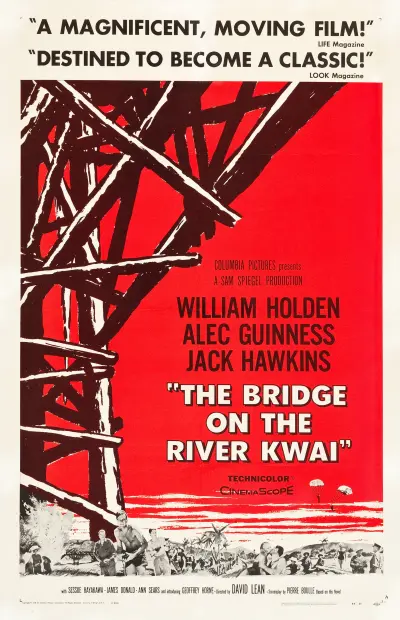
Let's delve into the cinematic brilliance of the 1957 classic, The Bridge on the River Kwai. Directed by the illustrious David Lean, this film has been permanently etched into the annals of movie history, celebrated not only for its grandeur but also for its intricate narrative that adeptly captures the complexities of wartime experiences. Set against the backdrop of World War II, the plot unfolds around British prisoners of war who are compelled by their Japanese captors to construct a railway bridge of strategic significance. However, the film's scope extends beyond mere construction—it probes deeply into the psychological strains wrought by the specter of war.
At the core of the narrative is British Colonel Nicholson, a character whose rigidity mirrors the steel railway tracks being laid. Initially, his staunch adherence to the Geneva Conventions and his insistence on upholding British craftsmanship and honor are perceived as commendable. Yet, as the story progresses, Nicholson's fixation on the task at hand evolves dramatically. The bridge, meant to facilitate enemy movement, becomes an emblem of his personal pride and coveted legacy. This transformation of Nicholson—from a dedicated soldier to a man consumed by an egocentric quest—offers audiences a glimpse into a paradox of warfare, where the demarcation between obligation and fixation becomes increasingly indistinguishable.
In stark contrast to Nicholson is the American prisoner of war, Commander Shears, who epitomizes the innate human desire for self-preservation. His practicality and intense yearning to liberate himself from enemy captivity resonate deeply with audiences. When Shears is compelled to revisit the bridge as a member of a commando unit tasked with its destruction, he embodies the profound internal struggle between individual survival and the pursuit of grander military objectives.
The construction of the bridge itself emerges as a powerful metaphor for the absurdities and ironies inherent in war. The prisoners of war invest their expertise into a project designed to benefit their foe, a manifestation of the illogical nature of conflict. The juxtaposition of their dedication and the moral and ethical implications of their labor is evocative of creating a masterpiece on the wall of one's confinement: despite its beauty, the encircling bars cannot be dismissed.
As the film reaches its climax, it presents a deeply contemplative meditation on the consequences of unchecked pride. Upon recognizing his inadvertent aid to the enemy, Nicholson's final actions symbolize both redemption and catastrophe, effectively obliterating the once-sturdy bridge linking duty to obsession. This poignant turn of events leaves audiences pondering a haunting inquiry: within the grand narrative of war, can the sum of a man's pride and achievements hold any meaningful value if it ultimately empowers his adversaries?
The Bridge on the River Kwai transcends its categorization as a mere war movie; it is a profound study of the human spirit amidst disorder. It scrutinizes the price of personal pride, the essence of leadership, and the core of human survival instincts. The film ingeniously employs its premise not just as a narrative device but as a mechanism that challenges viewers to reconsider their perceptions of loyalty and responsibility—whether personal, national, or moral. It converses with that part of our consciousness that contemplates our potential courses of action were we in the position of Nicholson or Shears, questioning the extent of our fortitude when confronted with the extremes of human experience. It is a cinematic odyssey that endures in one's memory well beyond the conclusion of the story, serving as a poignant reminder of the precarious balance between honor and imprudence.

